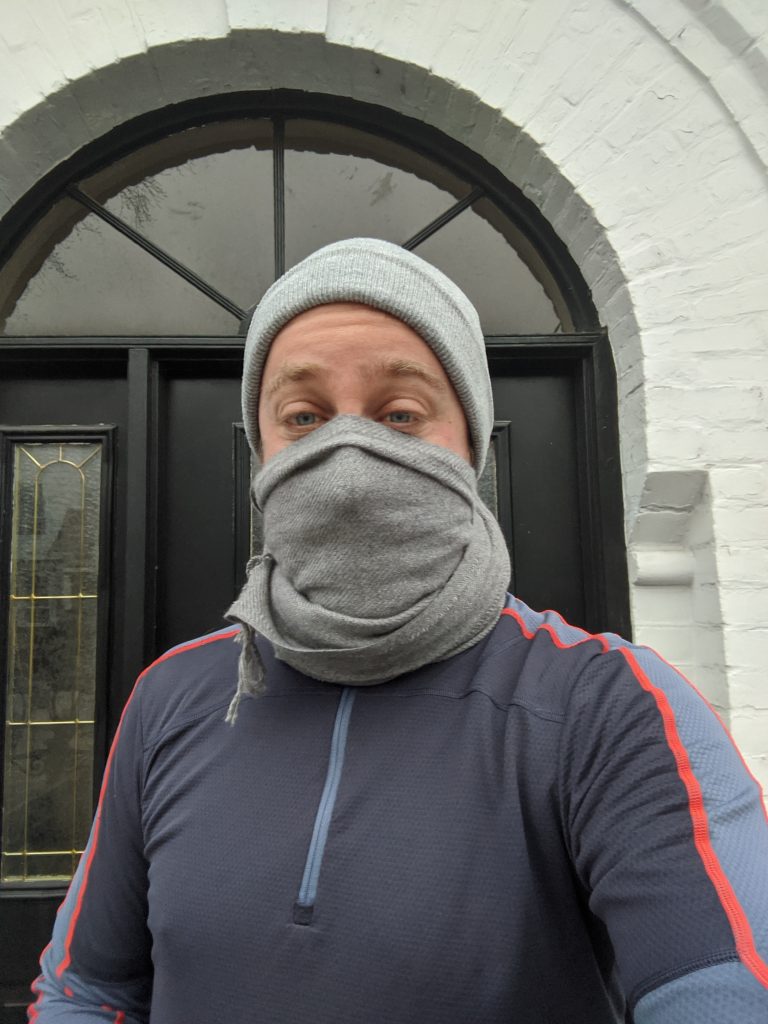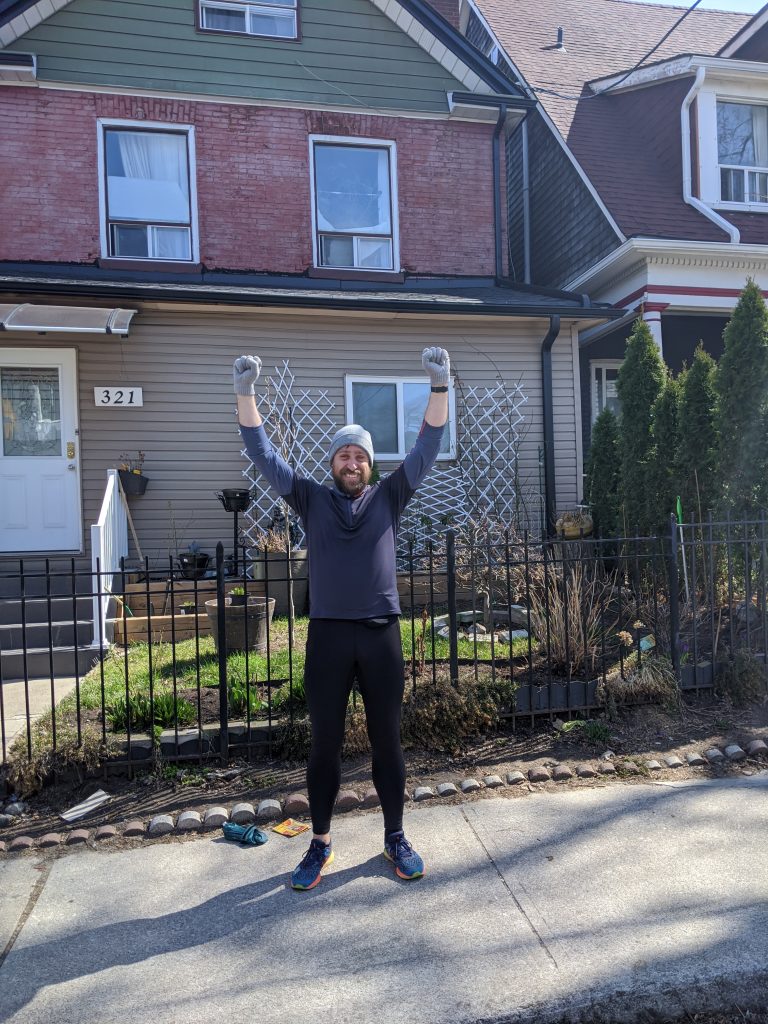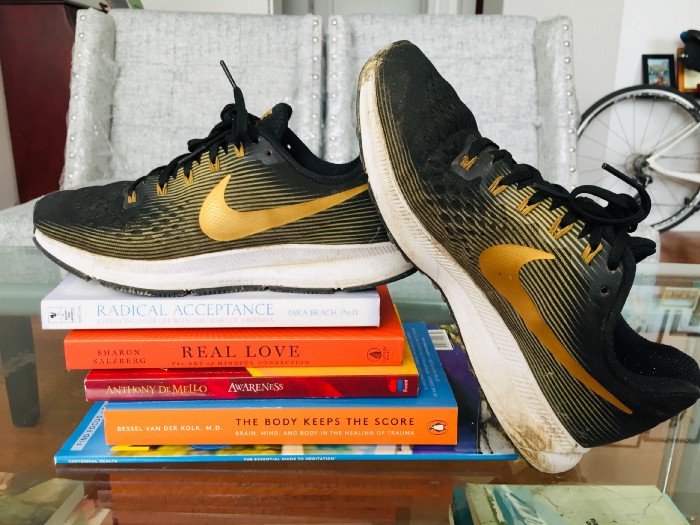The Inspiring True Story of a Woman Aging Backwards
I am an aging adult. However, I am aging in ways that many in my same age cohort are wondering how I am doing it: I run, I cycle, I swim, I hike and I live a full and bountiful life. I am a one-on-one grief counsellor and I volunteer with hospice. I am a death doula and soul care provider.
Most recently, I challenged myself to run 200 kilometres in one month as a fundraising challenge for Margaret Bahen Residential Hospice and Doane House Community Hospice. The annual challenge, like all the other fundraising projects, have been forced online and are trusting people will be passionate enough about their cause to become involved. Yesterday I completed a personal duathlon event. With the help of my coach/mentor/teacher—who is my daughter—I completed a 61-kilometre duathlon in recognition of my 61st birthday this month. I was running for hospice anyway and decided to launch a bigger challenged in the middle of it. It was a challenge and as I sit here writing my body is feeling stretched and pushed and yet feels so good.
I specialize in grief counselling and supporting anyone who death has touched their world and who are struggling to rejoin their own life again. Hospice is a beautiful environment where dignity in dying is paramount and families can walk the journey of death together with support and love. My role as a soul care provider is paramount in walking with people in the darkness while they carve out learnings in their spiritual journey.
While working with end-of-life care, I choose to live life fully and look up and out at all the ways we can age well, because it is in living life fully, we can better understand death and its role in our lives. I say this because no one is exempt from dying and when death is friended life becomes that much sweeter. Which brings us back to me: I have played with fitness since the days of Jane Fonda, spandex with a thong, and leg warmers. I was at an aerobics class in April of 1986, nine months pregnant with my first child. Certifying as a group fitness instructor though IDEA and the YMCA, in the 90’s I further trained with CanFitPro as a Fitness Instructor Specialist (FIS), Personal Trainer (PT) and as a Healthy Eating and Weight Loss Coach (HWL). I am fully trained to lead the class, teach the masses and set the standard. However, I harboured a secret that took over at the turn of the millennia and shame, blame and insecurity won, taking me deeply into the darkness. I hid a serious alcohol addiction for years. Finally, the alcohol won. For years I managed my addiction, quietly sailing through a late and mature life choice to go to university for the first time in 2007 at 47 years old. I enrolled in a Bachelor of Arts program and jumped in with both feet. I loved learning. This degree was needed as I was seeking to complete a master’s program and had never, ever gone to university.
I was looking like the pillar of success all while secretly drinking myself stupid. Ironically, I was such a good functioning alcoholic that no one knew (at least if they did they never let on, even in my sobriety). I would schedule evening classes so I would not drink during the day. Sometimes it worked and sometimes I just took wine in my portable cup to the class.
For 15 years, I pretended. I believed I was okay and faked my way through graduation of a BA honours degree and a master’s program in five years. I was passionate about the topic and hungry to find my own soul in the dying of my own days. Living alone I was able to cover it well. Where it began to culminate was in my struggle to move from school to a job. I was drowning my passions, no fitness routine, lying to family and hiding my soul all while still in hiding. In 2013-14 I was hired in a position that required me to counsel and care for the vulnerable. During this year, I realized the depths of my own demons, and one evening as I was deciding whether the old garage would hold enough exhaust fumes to do the job, my soul said: “Enough, go home and get well!”
I listened.
Since 2014 I have been on a soul’s journey of healing and wellness. Partnering with my body and mind I am now coming up on three years alcohol free. In 2017, right after my first grandchild was born, my daughter (a triathlete) was preparing for her summer of racing to get back to pre-pregnancy level. She signed me up for my first five kilometre race in April of that year. I never looked back. Running and cycling was for me.
Now I am running 15 kilometres any given day, cycling 30 kms as a leisure ride and, in partnership with my daughter (who completed a 70.3 in the summer of 2019), are planning a hike-through of the Bruce Trail in 2022.
I am aging well, and running is part of that journey. The strength of character, the layers of energy, and my determination has set a path for optimal aging and a bright future.
There were many hurdles and challenging days during the past 5+ years of recovery and it is not over, however the great life I am living fuels my knowing I never want to go back to the lies. Life is never handed to us easily. Life is an experience and our choices make it what it is. If you want to feel younger as you get older it takes commitment and work. If you want to age well it takes paying attention and choosing right. If you want to be your best self it takes awareness, tools and good friends. If you want to RUN, you must learn to crawl on your hands and knees before your soul and ask your divine source to come along. When one lives knowing we will all die, the life you live is that much sweeter.
“We are not human beings having a spiritual experience, we are spiritual beings having a human experience.” The body that carries the soul deserves to be the best it can be, so the experience of the soul is epic.
Cynthia Breadner is a runner and a cyclist who also works as a grief counsellor. She is the founder of GriefCafeBradford. CynthiaBreadner@gmail.com breakingstibah.com #breakingstibah















 Our Magazine
Our Magazine
